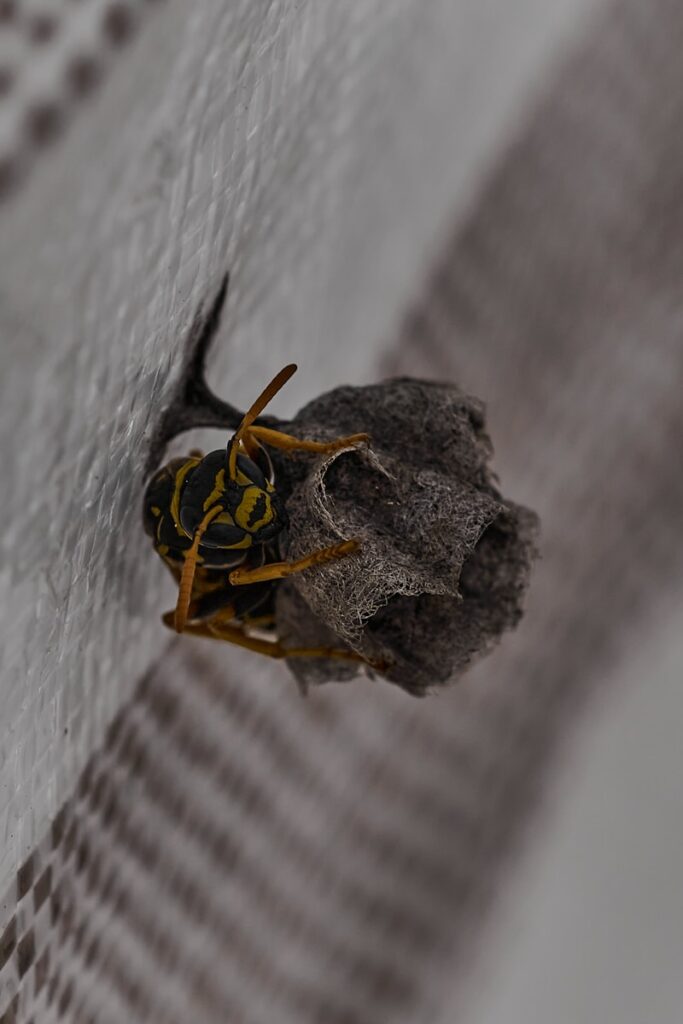Yellowjacket, Wasp, or Hornet?

Physical Appearance
It can be quite confusing, since it is so easy to mix up these 3 stinging insects. However, there are some easy ways to identify the Yellowjacket, and reduce the chances of getting stung. Yellowjackets have gotten their name due to the black and yellow color that they present on their abdomens, with a very small ‘waist’. They are social insects, and have annual colonies. Nests can be found in a variety of places, including bushes, trees, or attached to a home. A nest can be identified since they are built from material that appears to be paper-like. This paper-like appearance is due to chewed cellulose.
Diet
Yellowjackets have a similar diet to other flying insects, and it includes flowers, nectar, or fruit. Unlike the wasp or hornet, in the larvae stage of development, Yellowjackets consume protein. Workers will often bring back insects and other types of meat back to the nest for the larvae to consume. This makes Yellowjackets an important part of regulation of the population of other insects.
Behavior
They normally are not quick to sting, but they can become territorial and protective of their hive. This may lead to aggressive behavior, and increase the chance of being stung. Unlike some bees, they can sting multiple times, making attacks very painful. The venom that they inject upon stings can lead to allergic reactions in some people, so it is important to be cautious.
If you see multiple Yellowjackets around your home, and if you notice the paper-material nest nearby, it is essential to call a professional at Envirocare Pest Solutions. It is important that you do not remove it yourself without the proper tools, since you can be easily stung or anger the Yellowjackets even more. If you give us a call, we can remove the hive safely and efficiently, bringing you peace of mind.
